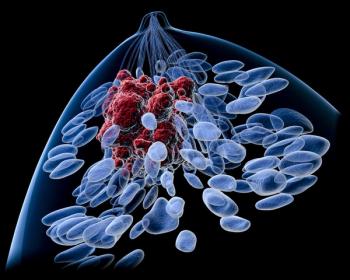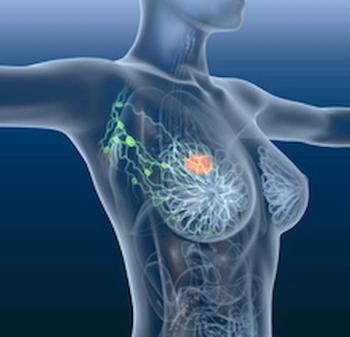
In Breast Cancer Risk Assessment, Focus on Density Residual-Not Density Alone
Breast density legislation is based on a misunderstanding of density’s association with cancer risk, and clinicians should focus not on density per se, but density residuals-the difference between a patient’s predicted and actual breast density.
Breast density legislation is based on a misunderstanding of density’s association with cancer risk, and clinicians should focus not on density per se, but density residuals-the difference between a patient’s predicted and actual breast density, reported Kevin S. Hughes, MD, FACS, at the 33rd Annual Miami Breast Cancer Conference, held March 10-13 in Miami Beach, Florida.
In the past, breast cancer screening was advised annually after age 40, noted Dr. Hughes, co-director of the Avon Comprehensive Breast Evaluation Center at Massachusetts General Hospital and associate professor of surgery at Harvard Medical School in Boston.
But today, risk-based screening involves consideration of a patient’s risk of mutation and genetic test results, 5-year and lifetime breast cancer risk, new guidelines-and increasingly, discussions of breast density on mammography.
“Breast density legislation is almost uniform across the United States; over 24 states require that patients be told what her breast density is when she has a mammography done,” he said. “This is the playing field we have in front of us. Most of us, as physicians, don’t understand breast density; trying to make this information available to patients is not trivial.”
Heterogenously and extremely dense breast tissue-ACR/BI-RADS categories C and D-are considered “dense” under these state laws. But roughly half of the population falls into these dense-breast categories, Dr. Hughes noted. “Anything that picks up 50% of the population is not going to be very useful in risk stratification.”
Density-reporting laws were created for two reasons, he noted: increased breast tissue density can mask existing cancers, and there is some reason to believe dense breasts might be more cancer-prone.
But advances in breast imaging may well have already addressed concerns about dense breasts masking tumors, Dr. Hughes said. Digital mammography’s sensitivity doesn’t decline with breast density the way film radiography can, he pointed out.
Furthermore, while density might be related to cancer risk, it “doesn’t track risk uniformly,” Dr. Hughes cautioned. “Asians have higher density and lower risk; older, high-BMI women have low-density breasts but higher risk,” he said. “So just saying that density correlates with risk isn’t enough. We need to realize that density is a function of both BMI and age. As BMI goes up, density declines. You have the same tissue contained in a larger envelope.”
And as women age, breast density declines, he added.
“We found that if you knew the age and BMI of an individual, you could predict density of that individual 73% of the time, using ABCD categories,” Dr. Hughes reported. “If you move away from those gross categorizations, you see more spread of densities across age and BMI, but most of the density is predicted by the age and BMI of the patient. So density [per se] doesn’t have a lot of effect on risk.”
Clinicians need instead to be aware of the “density residual,” Dr. Hughes argued: the difference between predicted breast density based on a patient’s age and BMI, and their actual mammographic breast density.
“Compare their predicted and actual breast density,” he explained. “If it’s much higher than predicted density, the patient’s risk of breast cancer is higher. If it’s lower, it’s lower. If her breast density is the same as predicted, then that patient will have average risk.”
“This will be a way to use density to predict risk, only in a way that actually makes sense,” he concluded. “Despite density legislation bringing density to the forefront, we need to bring risk assessment to the forefront-not just density.”
It is “extremely important” to remember other risk factors as well, of course, Dr. Hughes emphasized. “If a patient is at risk of genetic mutation, in that situation, regardless of density, the patient needs to get tested.”
Newsletter
Stay up to date on recent advances in the multidisciplinary approach to cancer.

















































































